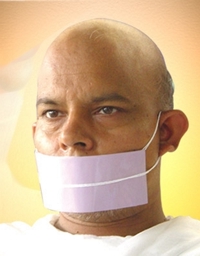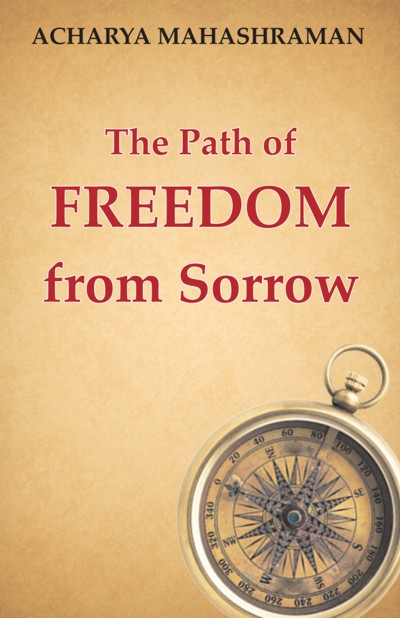Each living being lives in the world. There is neither a beginning nor an end of the universe. It constantly flows on. The question arises, "Who drives the worldly system and the cycle of life and death?" Man only knows the surface level. The permanent solution is not possible without understanding the underlying root. Therefore, we must get to its root. Acharang sutra says - "aggam cha mulam cha viginch dhire", i.e. man must know the upper side and the root as well. After understanding the root it becomes clear that it is the attachment which drives the world. In the absence of attachment the world cannot move. The world exists as long as attachment exists. If salvation is a truth, then world is also a truth. Infinite souls have attained moksha, and infinite will attain in the future. Yet, infinite souls will exist in the worldly life. The person who is ready for sadhana should think about the practice of conquering attachment (moha). Without combating it, sadhana (spiritual practice) cannot be fruitful. Under the guidance of the commander moha all the worldly activities are taking place.
Both attachment and non-attachment co-exist inside a man. According to Jain philosophy there is not a single being, who does not have partial destruction of both mohaniya and gyanavarniya karma. Contradictory things can exist together. Knowledge and ignorance both exist in the soul. Weakness and strength both exist simultaneously. Therefore, many things can stay together.
Once, a girl was making a beaded necklace. She had crystals, golden and gems beads. She put the beading all together on one string. A learned person happened to walk pass her. After watching her string of the beads he said, "kacham manim kanchanmekasutre, grathnasi bale! Tav ko vivekah" ("O girl! Where is your intelligence? You are threading crystals, golden and gems beads - all three together."). The girl was very smart. She knew Sanskrit grammar very well and understood his remark. She responded - 'Respected sir! What wrong have I done? What's the crime here? Even the great grammarian of Sanskrit, Panini has also written three different things in one maxim, 'mahamatih paninirekasutre shwanam yuvanam maghwanamah.' The three things are -shwan (dog), yuvan (youths), and Indra (king of deities)." We find one maxim in Sanskrit grammar 'Kalu Kaumudi' -'shwanyuvanmaghonampisyatthuti va uh'. She continued, "Where is the relation between these three? There is no comparison between dog, youth and Indra. When a great scholar like Panini can do it then what's wrong if I have string crystal, gold and gems beads together."
This is the system of the world that allows opposite things to exist in complement to each other. Man as well has both a deluding and non-deluding consciousness. Man should always be aware that he has to move forward in the sadhana of conquering delusion. Our body serves as tool in sadhana. We can practice spirituality with the help of the body. We can do Meditation; we can also do swadhyay and fasting. On the other hand vices are also performed through the very same body. Violence can be done; one can tell a lie; one can rob and perform many more evils. Body is just an instrument. It depends on the conscience of man on when and how to use it. The body may be strong and also weak. Therefore man should be focused on doing maximum sadhana till he is capable. Sadhana can become difficult if the body is not strong.
Dasvealiyam also depicts the same idea:
Jara jav na pilei, vahi jav na vaddhai Javindiya na hayanti, tav dhammam samayare
i.e. Spirituality should be practiced before the old age tortures you, physical illness grows, and the senses go down.
Though spirituality is to be practiced in every situation, but a strong body is required for special and rigorous sadhana. Special sadhana requires special body. Keval gyan(omniscience knowledge) is not possible for everybody. With many more requirements, it needs a powerful configuration of the body. Keval gyan is possible only if the body is perfectly strong. In old age when the body becomes weak and eyes, ears, nose, hands and legs do not function very well then practice of special sadhana is a distant dream, even simple sadhana can also be not practiced perfectly.
The world moves with attachment. Attachment is intimately related with selfishness. Without selfishness there is no attachment. We feel sad when there is separation from the person you are psychologically attached to, whereas you feel no pain if there is separation from a person you are not selfishly attached with. Selfishness is a kind of attachment. The progress of family society and nation is not made in the absence of attachment. From a pragmatic perspective attachment is necessary while from the spiritual perspective detached and disconnected consciousness is ideal.
A common man flows with the world. He follows what others are doing. The one who wants to become something, wants practice spirituality will have to flow in opposite to worldly activities. He will have to face the consequences of this decision. Then only he can practice detachment and spirituality. Sumermal Dugar, inhabitant of Sardarshahar, lost his young, capable and energetic son. At that tough moment the entire city was crying but he was very balanced and detached. He was consoling the people who were crying. He was encouraging them to stay detached. He was trying to make them understand the truth of association and separation. Such people become ideal and role model for the society. Therefore, in spite of living a mundane life man can do sadhana, can improve detachment and make progress.
Sometimes even when a great person becomes entangled in the whirlpool of attachment it becomes difficult for him to come out of it. According to Jain history in the biography of Lord Rama, it is mentioned that at the death of Laxman, the Great Rama became unbalanced. He was so overcome with grief that he wandered aimlessly for several months after carrying his brother's dead body on his shoulders. He would make believe that Laxman was still alive. Because of this delusion, sometimes he would titillate or feed him.
Sometimes he would call the vaidya (doctor). The doctor already knew that Laxman was dead. Whom should he treat? But Rama was not ready to accept it. It is mentioned that when other deities came to know that the great person like Rama became delusional and he has been affected by attachment, they came in the form of humans before Rama and started trying to grow a lotus on a rock. When Rama looked at it he said - What a foolish effort you are trying? How can a lotus grow on a rock? Then he responded - 'if a lotus cannot blossom on a rock then how can a dead person come back to life? Laxman is dead.' In this way the deities were successful in removing the cover of attachment.
The powerful tool to end attachment is the practice of detachment. As the detached consciousness is awakened, the consciousness of attachment goes away. Through sadhana, practice, Meditation and contemplation, attachment can be conquered and the soul can move in the direction of detachment.
 Acharya Mahashraman
Acharya Mahashraman
